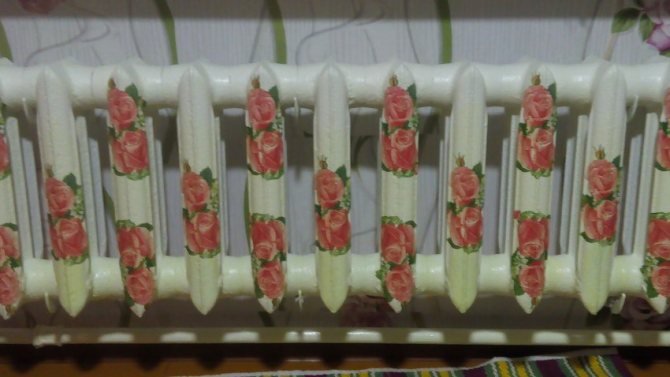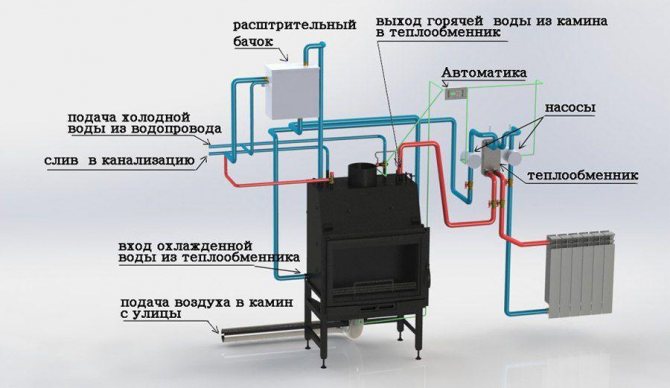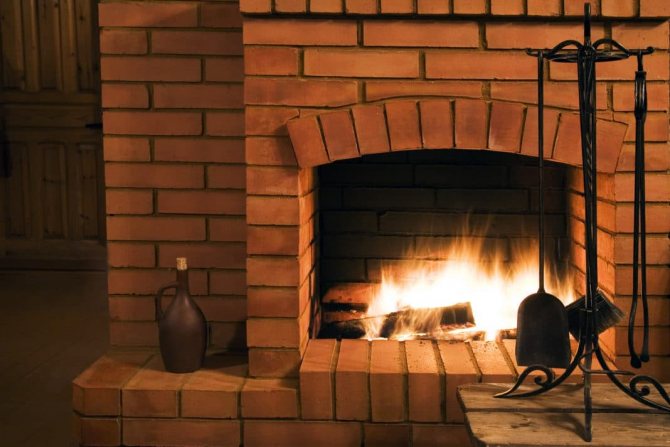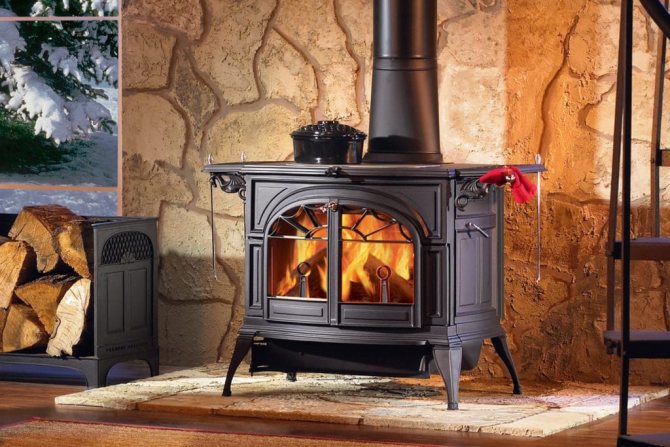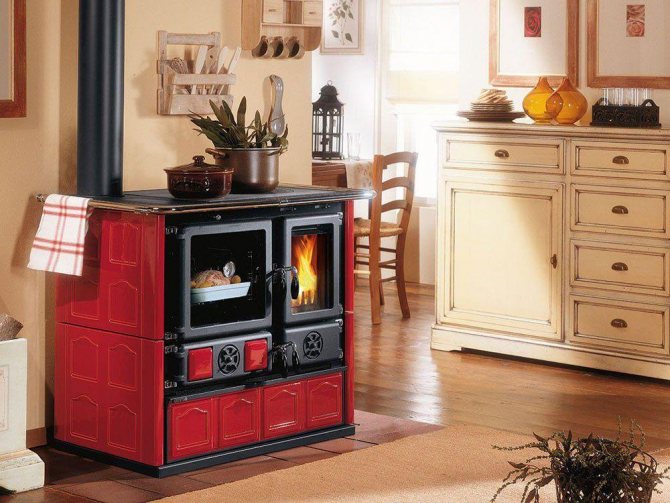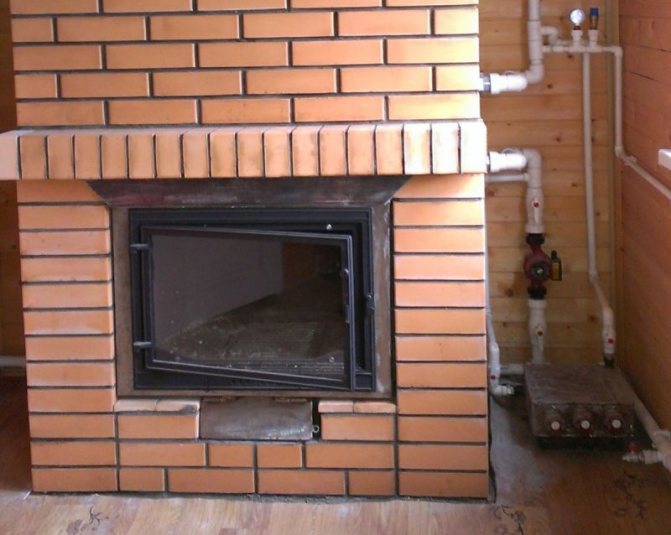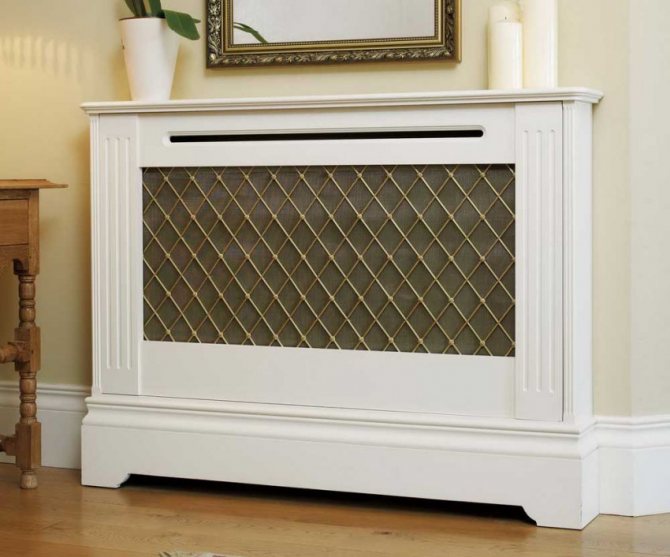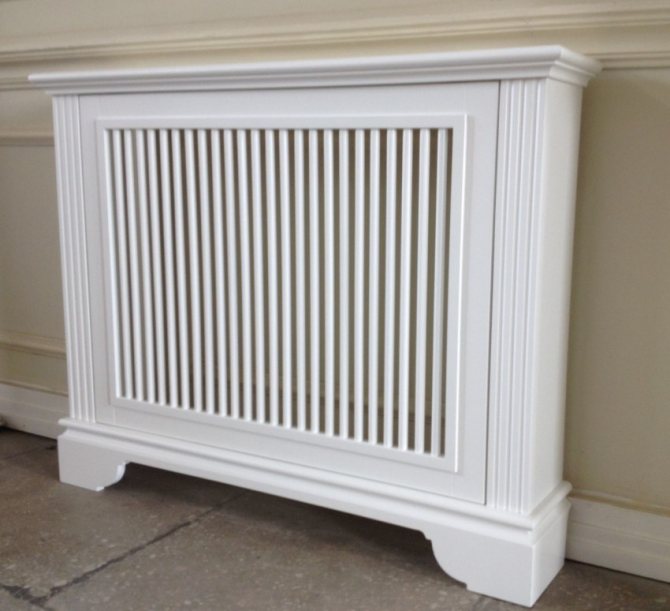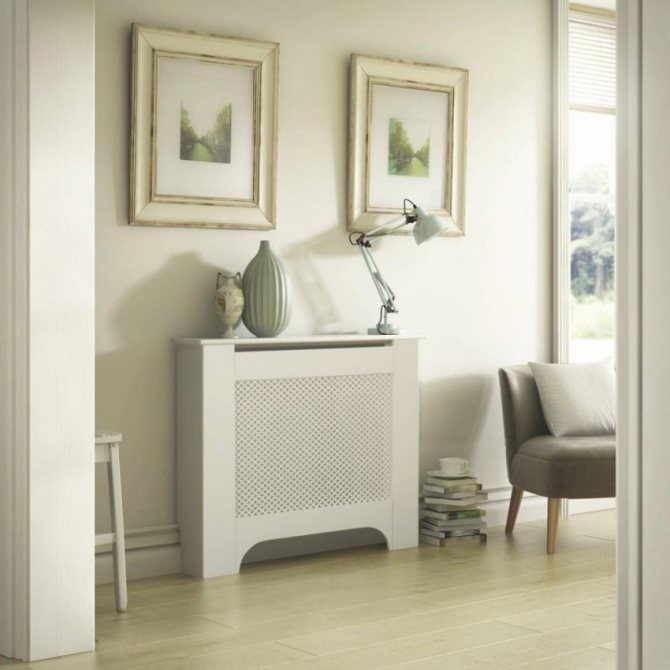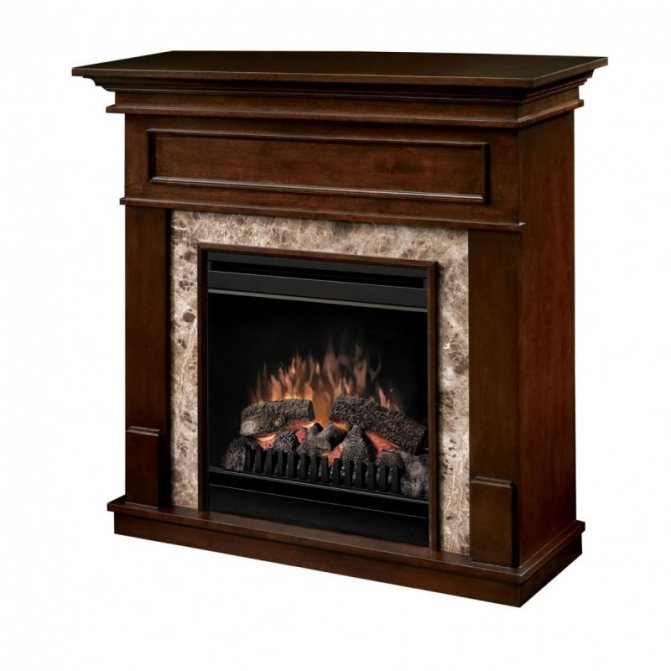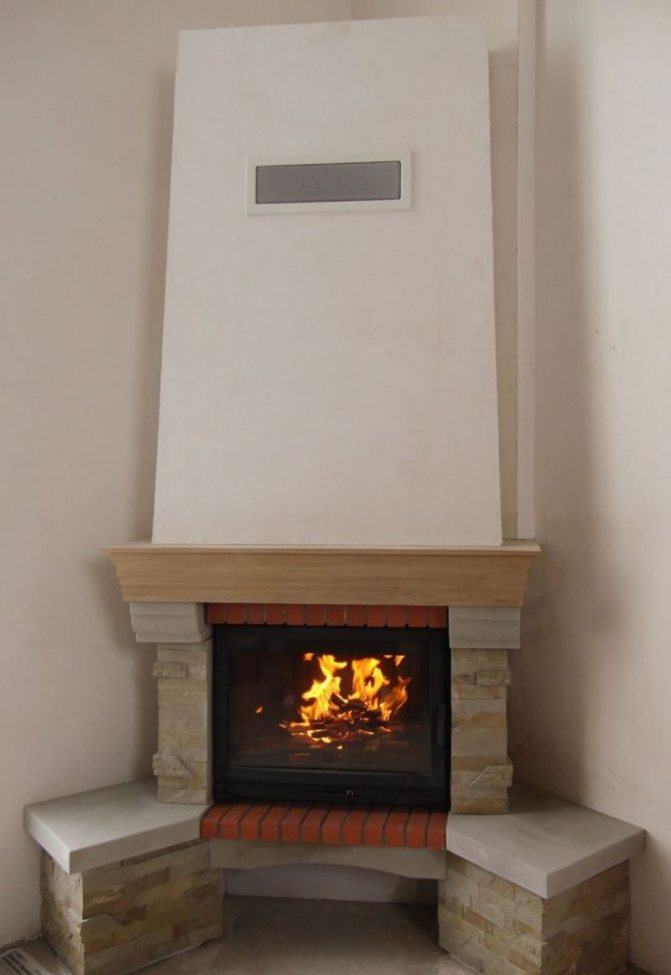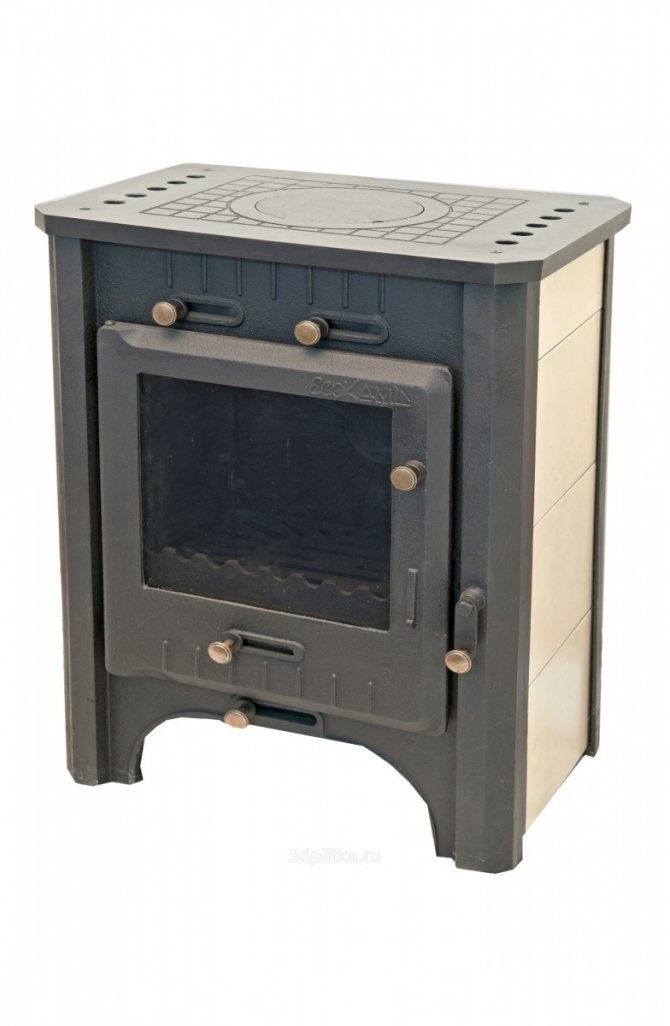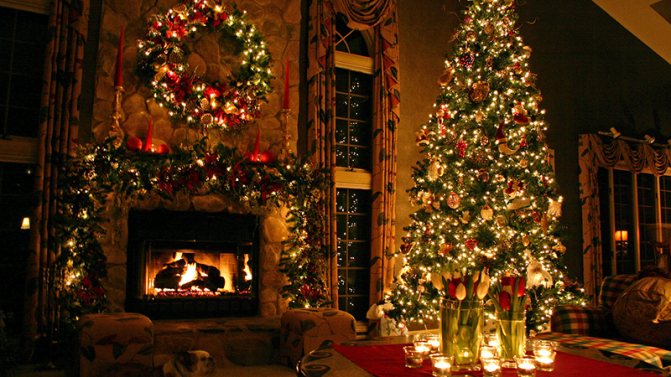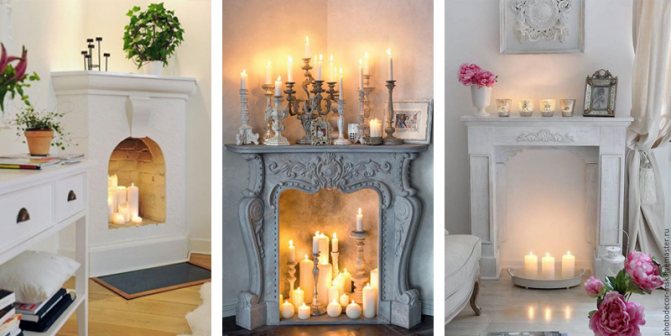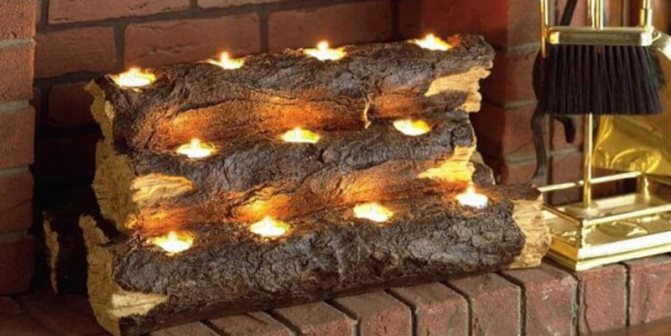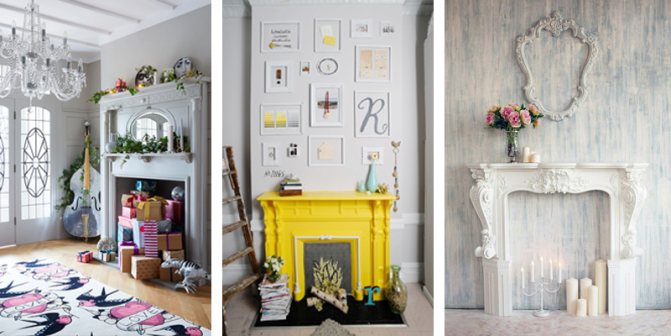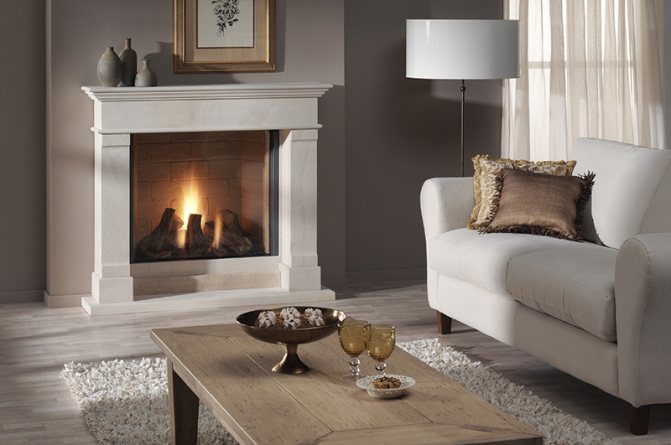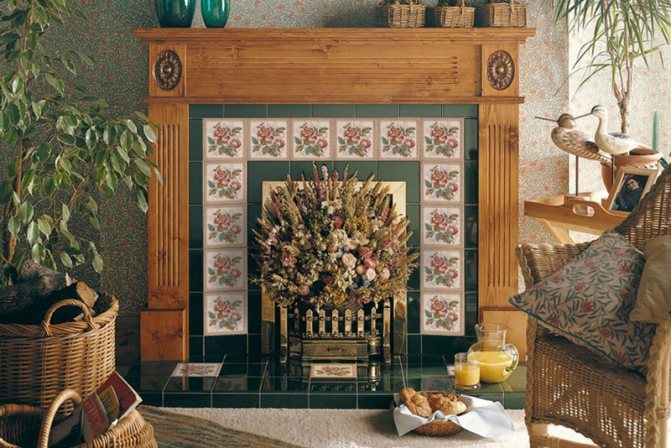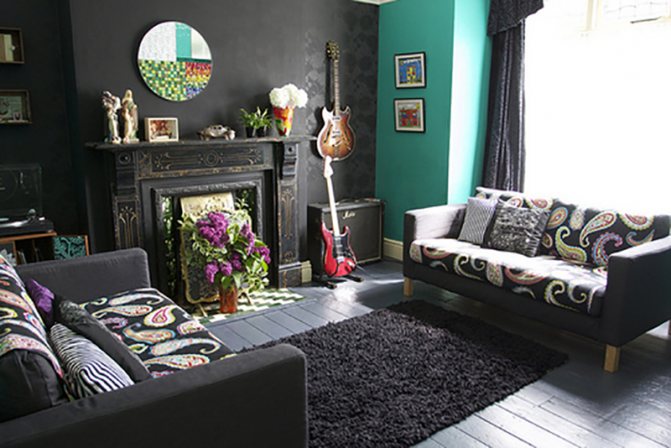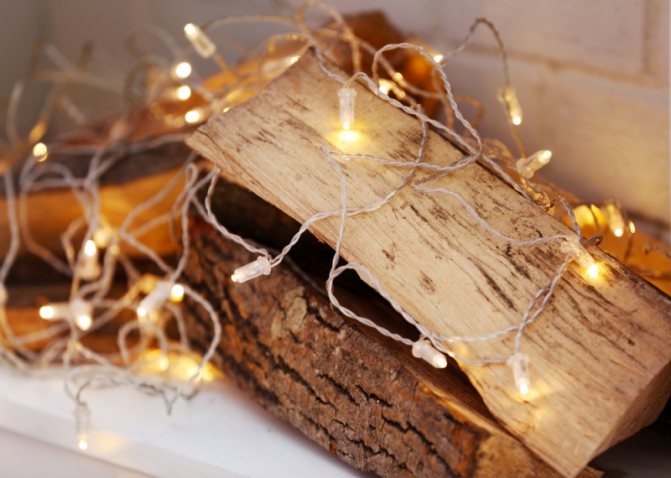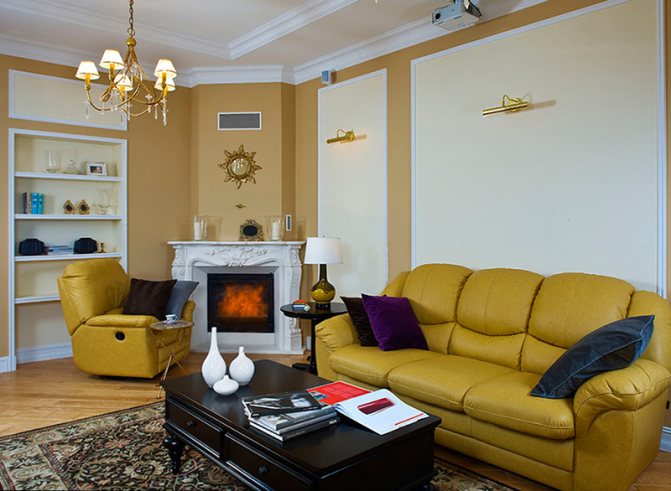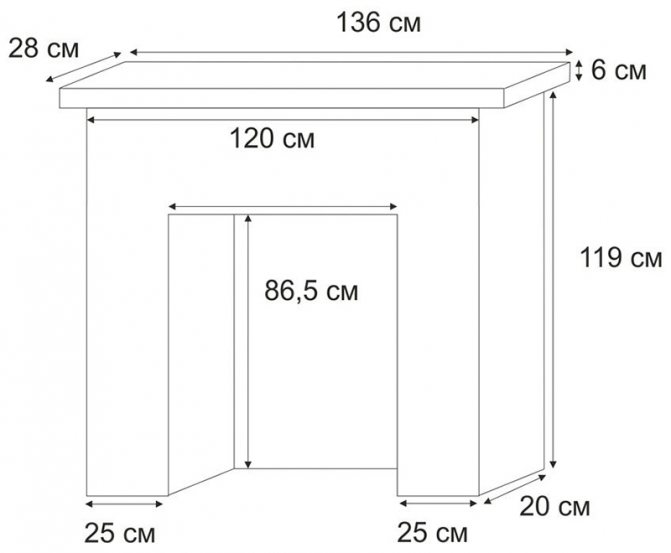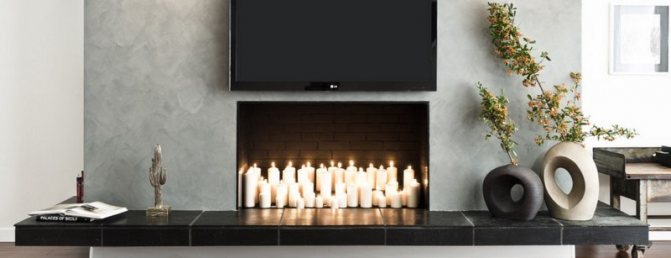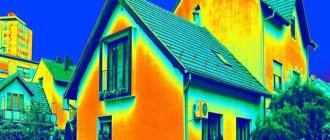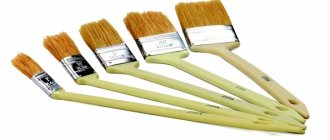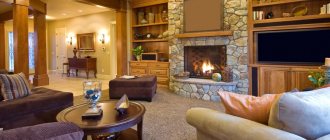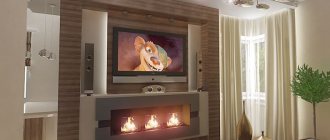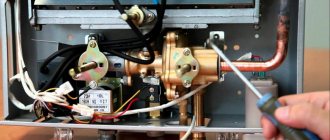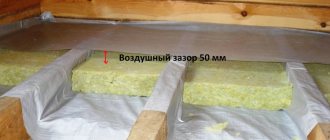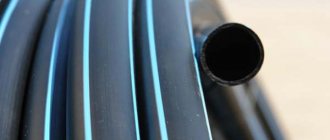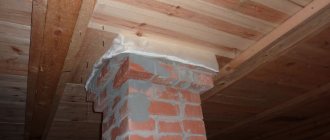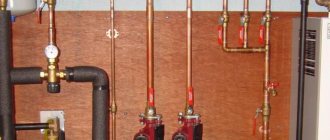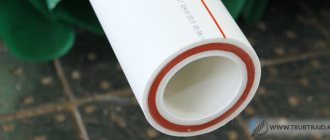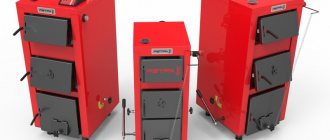Any owner of a private house dreams of a large fireplace, which in itself creates an atmosphere of warmth and comfort. The whole family will gather near an open fire on dark, winter evenings, exchanging events for the day. However, modern fireplaces are not just a decorative part of the interior. A well-done modernization turns the fireplace with a water heating circuit into a full-fledged source of heat for the whole house, along with the generally recognized factory-made heating equipment.
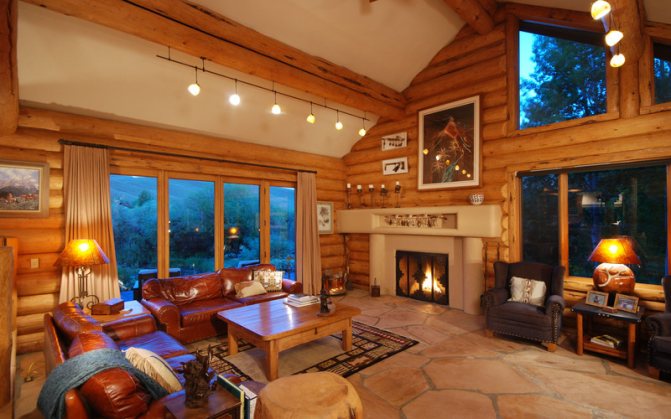
As practice shows, fireplaces for air heating at home and equipped with a water circuit also help to significantly save on energy consumption. After all, solid fuel costs somewhat less than the price of electricity and gas.
What is a fireplace with a water heating circuit?
A fireplace is a type of heating equipment where heat is generated by burning primary fuel. It can be wood, coal, pellets. There are gas fireplaces for heating.
Fireplace equipment can be:
- with open and closed fireboxes;
- water and air heating circuits;
- natural and forced air flow;
- built-in and free-standing.
The main distinguishing feature of the heater is an open combustion chamber.
The heat generation area and the fuel oxidation zone (process zone) are combined here, which reduces the percentage of heating of the environment as a result of natural air convection. Most of the room temperature rises due to radiant energy (IR waves).
The main disadvantage of the above-described scheme of heat exchange between the fireplace and the environment is significant heat losses from the combustion products of the energy carrier leaving the combustion chamber through a brick chimney. The built-in water circuit, which is integrated into the wiring of the home heating system, allowed to increase the efficiency of heating equipment. That is, a fireplace with a water heating circuit heats the room both through the formation of IR waves, and according to the principle of a conventional boiler, heating the coolant in the radiators.
Application in the interior
The most interesting ideas are presented below:
Living room.
You can decorate the radiator with a decorative false fireplace, a special plasterboard box. It all depends on the imagination, style direction of the interior.
Kitchen.
You can cover the heating element with a special screen, which is consistent with the overall concept of the interior. If desired, it can simply be painted in a contrasting color.
Bedroom.
A decorative grille, screen or false fireplace will fit here. You can paint the batteries with an interesting ornament or use the decoupage technique.
Children's.
An interesting option would be decoupage decoration. The child really likes to look at beautiful modular pictures.
If you liked the video - share with your friends:
It will also come in handy for repairs:
- Built-in wardrobe in the hallway interior
- Hydrangea paniculata sandy fries preparation for winter
- Stefanandra planting and care in the open field
Equipment device
The heart of the fireplace is a steel casing (16). The combustion chamber (1) is mounted in it. The cast iron door (2) prevents heat from escaping from the combustion chamber. For this, it is equipped with tempered glass (3) and a bolt (4). The combustion chamber casing (5) is connected to the frame by means of cast iron axles. The bottom of the furnace is made of heavy-plate cast iron (6). The grates are laid on top of it (10).
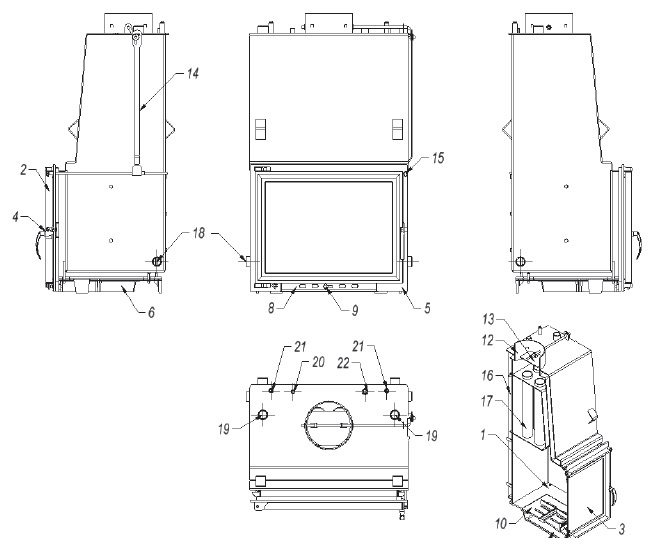

Fireplace complete set.
Today, a fireplace heating element can be bought on the market for similar equipment. However, some people want to make a DIY fireplace with water heating. To do this, you need to familiarize yourself with its device in more detail.
They also have an impressive thickness, since there is a direct oxidation reaction of the energy carrier. Gas fireplaces for heating do not have a grate, since ash does not form here, which should accumulate in the ash pan. The combustion chamber has a cast iron fence (11). It also serves as a decorative function, and acts as an additional protection against the fallout of burning fuel. The ash pan (7) at the bottom of the device is necessary to collect solid combustion products. It must be retractable without fail.
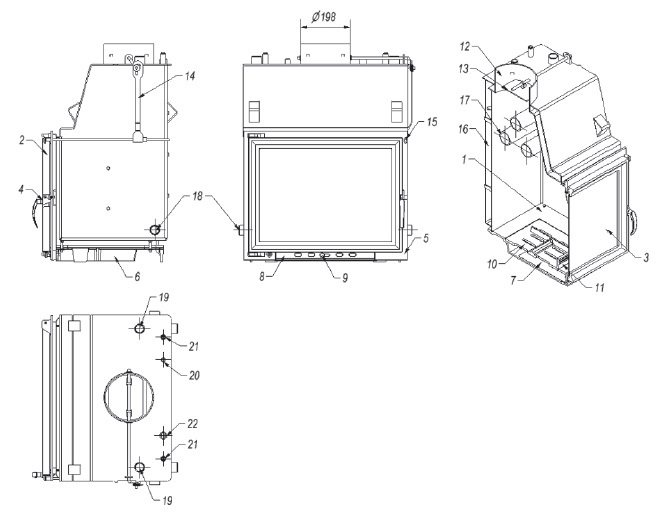

Components for a fireplace with a water heating circuit.
The regulation of the intensity of combustion of the energy carrier occurs due to the supply of primary air. The regulating function is performed by a window (8) in the ash pan and a manually controlled throttle (9). Secondary air necessary for the afterburning of gaseous combustion products of wood and solid particles, which rise along with the gas streams, enters through an opening in the tempered glass of the door.
A fireplace with a water heating circuit with their own hands is equipped with smoke tubes through which the smoke passes into the chimney (12). The obligatory attribute of the chimney is a regulating damper (13). The angle of its inclination is determined by a special mechanism (14). The supply of cold heat carrier from the heating circuit occurs through the lower branch pipes (18). The heated coolant leaves the fireplace through the upper nozzles (19). Branch pipes 20-22 are intended for installation of a coil, thermostat.
How do you adjust the effectiveness of a stone?
Before us, customers often go to waste: "How can I move the KKD into an open stone?", "How can I be more effective?" In the given statty, it is possible for you to give an opinion on the diet; The methods of improving the efficiency of the function of your visible stone are clear, we know the way to reconstruct with the minimum involved in the design.
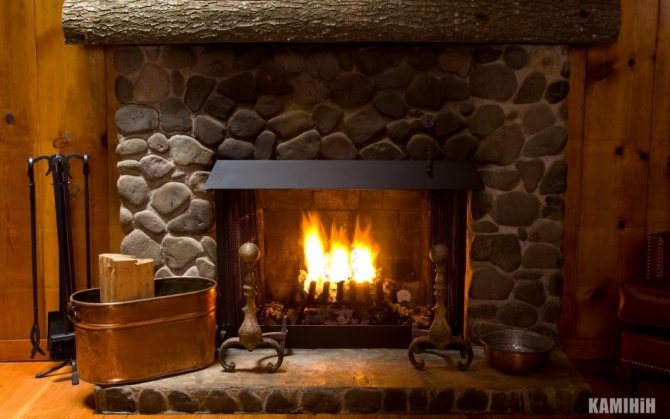

Vidkritiy stone of the English type - tse stone, the basis of which is a portal of destruction from marmur chi vikladeniya s vognetrivkoy tsegli For a long time, such classic stones have been known in old-fashioned castles and maddened ones. Mayuchi bagatochnuyu history, in our hour the stench of vikoristovuyutsya in front of for natural purposes, so there is still little warmth, as we can see only the close proximity of the stone. Хні characteristic features:
a) non-high level KKD;
b) panorama of the open half;
c) the visibility of the possibility of heating up according to other factors.
And so, the basic methods are clear, in which it is possible to make the stone more functional:
1. Zakhisna screen - a grid, as to stand in front of a stone and a vison, as a function, to keep things out of the way, blocking out the hour of consuming firewood, so decorative. Smell, the stench of being made out of metal and decorated with colorful ornaments, a little surrounded by such a func- tion, which is not injected into the intensity of the room, is given a dumb screen.
2. Stone doors - all the doors are prepared for the chavun, as they can be used for critical stones and food constructions. The function of such doors in the offensive:
A) seize from ever-unsafe situations, from iskors, as they are in the process of mining and consuming firewood.
B) take a small increase in KKD from 2 kW (in a closed stone) up to 4kW (with vicious doors), to increase the efficiency from 20% to 40-45%.
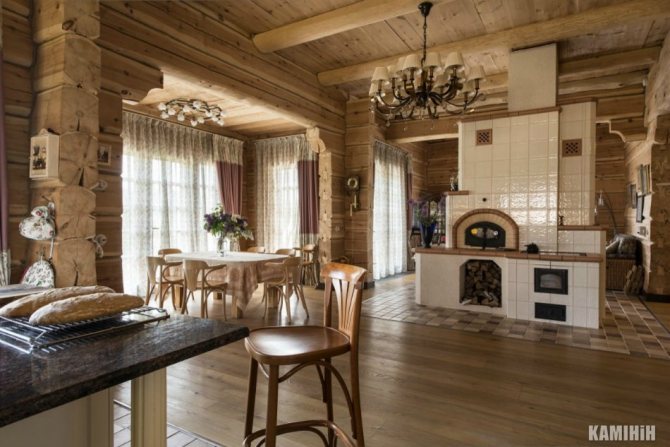

It is not enough to pick up such doors those, when using the stench, do not expect it to be airtight: let the dim flow through the firewood process and sprinkle the smoked firewood, which is not a natural looking viewer. Also, a short time of breakdowns of convection mechanism, some of the smokers in the daytime taking away from the street, when they are present at their functional stone contributions, to the fact that they are in the middle of the day from the very moment of discomfort, provitruvatelnennya.
3. Kaseti - the best functional method, how to re-create your view of the stone on the basis of the effective evaluation.
The cassette is a valuable contribution, which is of great functionality, such as a stone firebox:
A) The inner surface of the stone deposit is lined with fixed material, so that the stones are burned out (chamotte, vermokulite) and so there is the possibility of making a contribution on a permanent basis;
B) Visokiy r_ven KKD more than 75%;
C) Demand 8-12 kW;
D) Panorama fire through hermetically sealed glass doors;
E) Pick up the street from the street.
E) Economical consumption of firewood, the possibility of secondary additional gas consumption to the regime of additional consumption.
Є) Clean sklo.
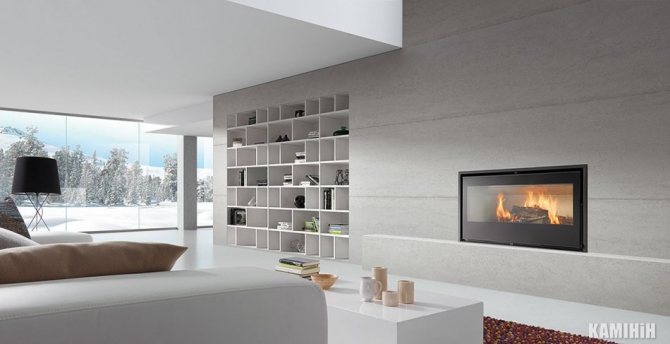

The cassette is seen from a stone firebox in the form of a flat dimming chamber, apparently it is easy to mount it into a visible stone, it does not damage the design and does not destroy the decorative structure. Everyday cassettes can be used for turbines, from one to six, depending on the size of the deposit, which take intensive heat supply from the community, and also give the possibility of generating the necessary heat for two up to 6 Insulating box. Naybilsh see on the market of Ukraine, cassettes with turbines from the Spanish company Rocal, from the standard Norwegian chavun cassettes - Jotul.
In order to insert the cassette into the cassette, it is necessary to lower the meter of the stainless steel pipe through the existing dimmohid, seal it tightly from the cassette, as much as possible to put it into the stone portal, and then carry out the installation along the way.
Your uvazy proponumo look at the decal of stone brands: "Jotul", «Hoxter», Austroflamm, Rocal.
As soon as you try to re-design the display of stone, to improve its efficiency, our high-quality technical faults are happy to help you!
Roll up, save money easily and easily!
How are fireplaces with air ducts arranged?
A fireplace with air heating is simpler than similar equipment, but with a water circuit. That is why it is much easier to make the first option in artisanal conditions than to make a fireplace with water heating with your own hands. This explains the popularity of the air circuit in private houses. Such wiring acts as an excellent alternative way to heat a room when the main (gas or electric boiler) has ceased to function for some reason.
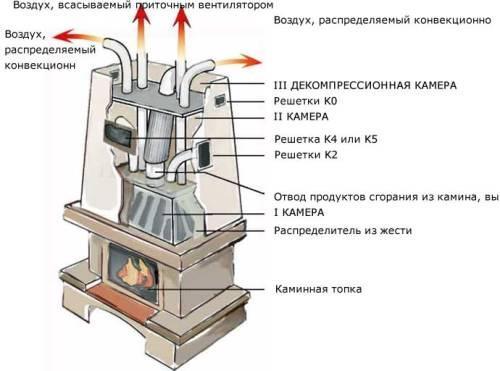

Air heating method.
Fireplaces for air heating of a house are similar in structure to their counterparts with a water circuit. The process of removing combustion products from the system is of interest.
Chamber I. It is located under a metal convector. It is equipped with a fan that supplies hot air. The latter comes from the combustion zone. Chamber I is equipped with a series of pipes. They are mounted to the side walls of the fireplace chimney. These tubes end with valves. Such a device is necessary if the electricity is cut off and the supply ventilation stops working.
Camera II. Through it, cold air is drawn through the side grilles-fans of the outer shell of the fireplace.Cold air is heated by the metal body of the heating element and pipes through which the combustion products are removed. The flue can be heated up to 700 ° C. It is in it that the final afterburning of the gas formed as a result of fuel combustion and solid particles occurs.
In order to significantly increase the heat exchange between the chimney and the cold air entering chamber II, the surface of the former is increased by means of ribbed hoops. Also, the chimney is equipped with a damper. With its help, it is possible to mechanically regulate the draft in the fireplace, and, consequently, the intensity of combustion. From chamber II, warm air is either evenly distributed in the space near the fireplace through special openings, or enters the air ducts, which diverge from the heating element throughout the house.
Any home-made device is inferior to factory equipment in terms of efficiency and efficiency. That is why you need to trust the manufacture of fireplaces to specialists who have the appropriate education and experience in this field.
Camera III. Decompression chamber. It is necessary so that heating by a fireplace with an air duct is safe. It plays the role of an insulating space between the ceiling of the house and the hot chimney.
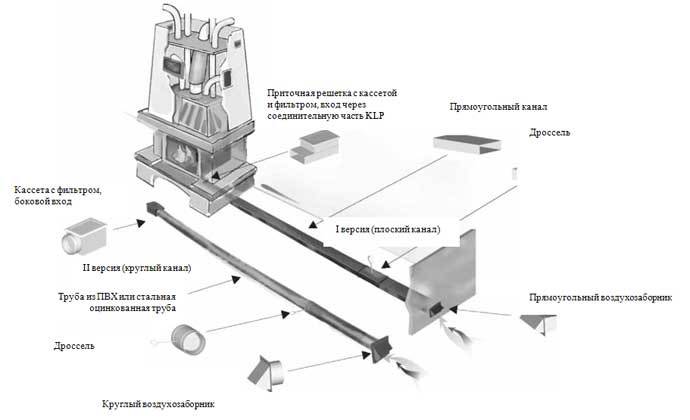

Air-heated fireplace piping.
How does a fireplace work?
The principle of operation of a fireplace with air ducts is based on the correct supply of fresh air from the outside and the timely removal of combustion products.
The air supply to the fireplace can be done in two ways:
- directly from the living quarters;
- using an air duct from outside the house.
The first method is easy to install. To do this, it is necessary to correctly calculate the area of the room where the fireplace is mounted, according to the power of its combustion chamber. So, for the combustion of 1 kg of wood, 8 cubic meters of air is needed. Based on this, it is easy to calculate that a heating element with an average power should be installed in a room with a cubic capacity of at least 30 cubic meters. Otherwise, unfavorable conditions for human life and even an emergency situation are created in the house.
The advantage of the second method is that there is no relationship between the power of the equipment and the volume of the room where it is installed. In this case, combustion air is taken from the street. To do this, under the floor in the house, round or rectangular air ducts made of galvanized steel or PVC material are laid to the fireplace. At the end of the pipe facing the street, there should be a grill. It protects the air duct from rodents and insects. Filters are also important in this case. They are designed to clean the supplied air from dust. They are installed in the valve directly in front of the fireplace.
Coloring to match the room
The decor of the battery by coloring in the same tone with the room will complement and create an original style.
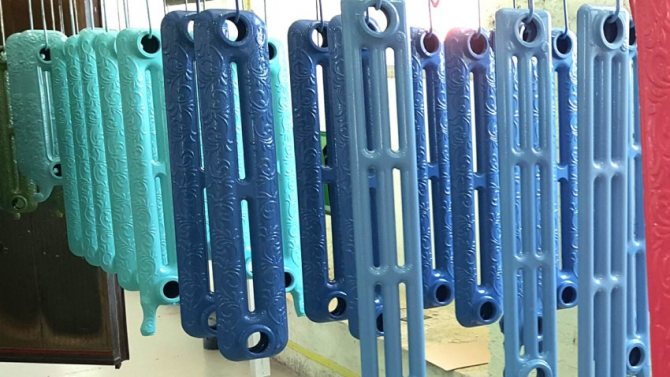

Do not forget about its main task - heat transfer, so paint layers should not be large.
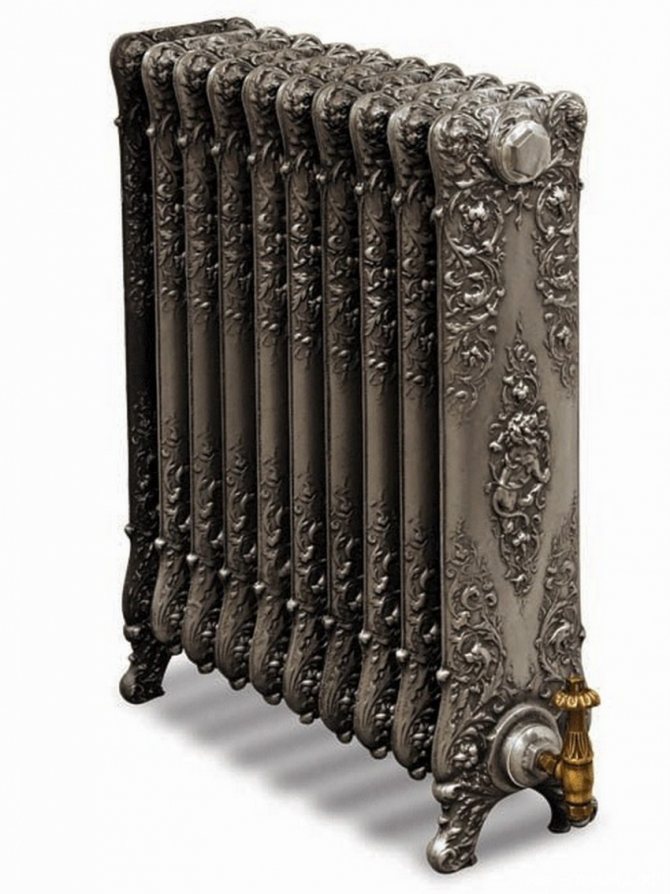

First, you need to remove excess layers of old paint from them, grind and clean them. Therefore, the old coating is first removed and then cleaned with sandpaper. Next, the surface is degreased and primed.
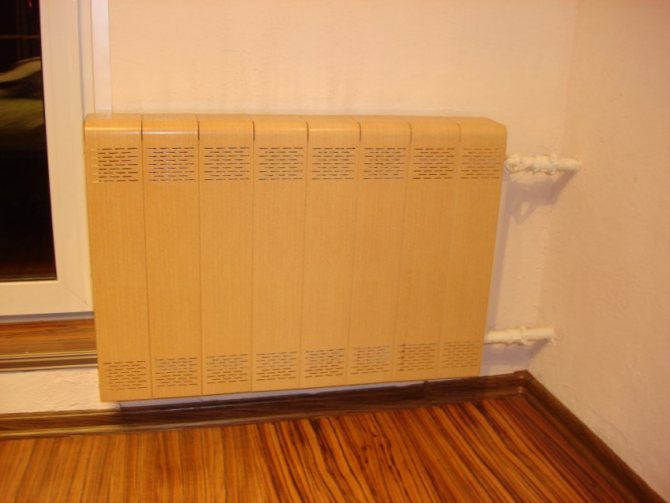

Then comes the stage of applying paint. For these purposes, special colorful agents are used that are resistant to temperature heating.
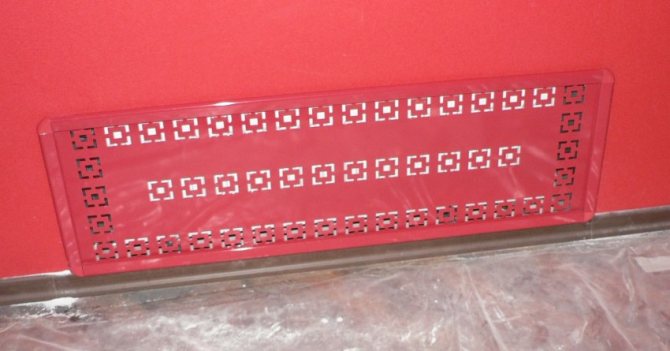

You need to paint them based on your personal preferences. You can listen to the competent experts in the industry, but the choice of color is your personal prerogative.
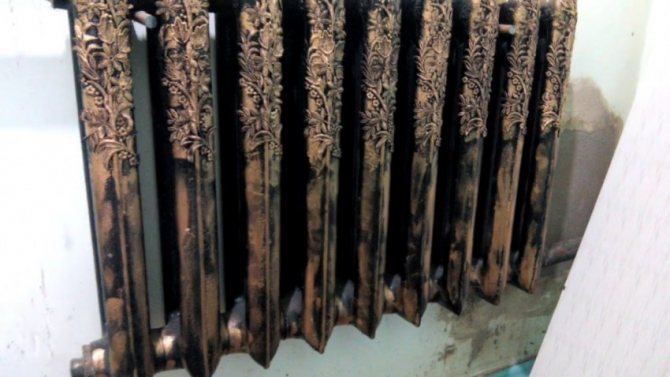

Which is better: a fireplace with a water circuit or with air ducts?
This question cannot be answered unequivocally. The advantages and disadvantages of both systems come from the characteristics of the heated room, the desired temperature regime in the rooms.
Heating fireplaces with a water circuit have the following advantages:
- efficiency;
- low cost;
- the contour of the fireplace can be easily integrated into the existing heating system of the house;
- the possibility of preparing hot water;
- low cost of equipment;
- low price of energy carrier.
A heating fireplace with a water circuit has disadvantages:
- low efficiency;
- the need for constant loading of the energy carrier;
- manual mechanism for adjusting the intensity of work.
If we compare fireplaces with open and closed combustion chambers, then the efficiency of the first is 20%, and the second is 70%.
A fireplace with air heating with your own hands is the easiest to make, because the equipment is not distinguished by a complex device. The very layout of the air ducts is also easy to organize. The room temperature is reached within a few minutes.
Disadvantages of a fireplace heating system with air ducts:
- constant circulation of dust in the house due to the operation of fans (in the case of forced air circulation);
- increased noise level due to air movement along the air ducts;
- the temperature in the room drops as quickly as it rose after the extinction of the fireplace;
- low efficiency;
- the need for manual control of the combustion reaction;
- the need for constant loading of the energy carrier into the furnace.
Heating a house with a fireplace with a water circuit and air ducts can be an excellent alternative source of heat, but not the main one. Such heating elements run on an inexpensive energy source. But fireplaces can be afforded by those people who are not too lazy to constantly throw firewood into the firebox, control the intensity of their combustion and periodically clean the chimneys.
How to hide a pipe and heating radiators: tips from a heating engineer
The main task of a heating radiator is to heat a room, which it does by a combination of two methods. The first is infrared radiation, in which heat is transferred directly to objects that are located in the room. It is this heat energy that we feel when we bring our hands close to the battery. The second method is convection, due to the heating of the air, which, rising upwards, displaces the cold air, thus organizing the circulation of air in the room, which leads to a more or less uniform temperature distribution.
Typical diagrams for connecting a fireplace to a heating system
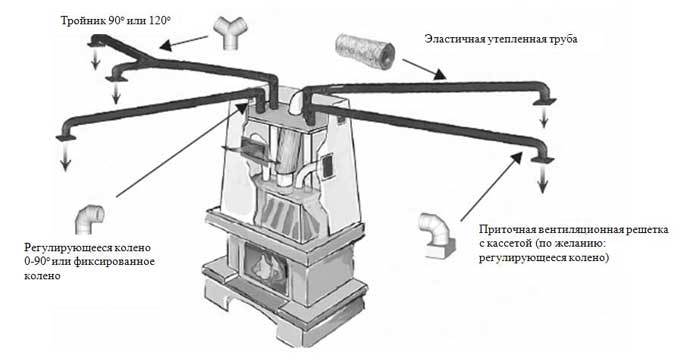

Gravitational convection.
To maximize the efficiency of the fireplace and effectively distribute the heat generated in its combustion chamber throughout the house, it is necessary to integrate the fireplace into the heating circuit of the house (in the case of a fireplace in a water shirt). Fireplaces with air ducts require a special development of the heating elements.
The scheme of air heating by a fireplace depends on the area of the served area. So, gravitational wiring is suitable if the area of the room that needs heating is very small. The length of the air ducts should not exceed 3 m in length. In this case, the air heated by the fireplace will rise through the channels, displacing cold air at the ends of the pipes.
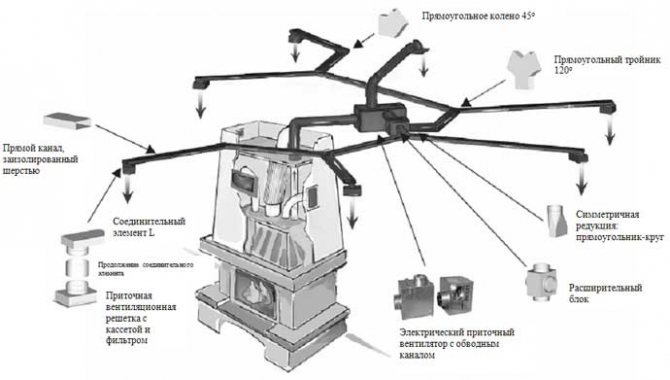

Forced convection.
This circuit is completely non-volatile, easy to design, install and use. Requirements for its installation: the length of the air ducts should not exceed 5 m, the pipe itself should be flat with a minimum number of turns. The material of construction for the pipes should be refractory aluminum capable of withstanding a temperature of 250 ° C. Thermal insulation of the duct body is required.
The contour with forced air movement, although it is more expensive in execution, compared to the gravitational analogue, it allows you to heat a large area of the room. At the same time, the complex layout of the house will not affect the efficiency of the system. In addition to air ducts, this circuit is completed with elements of supply ventilation (as the main driving mechanism of warm air), connecting nodes and corners, all kinds of elements for controlling directed air flows.
STONE WILL HELP TO RETAIN THE HEAT
Most prefabricated mantels are made of lightweight concrete, and this material has almost no heat build-up. However, you can order a finishing kit made of natural talcomagnesite stone or soapstone, which has a very high specific heat - about 980 J / kg * K (about 1.6 times higher than that of oven bricks).
There are similar products in the assortment, "Teply Kamen", "Energoresurs-T", etc. If you have purchased a popular model of the furnace, then it is enough to make an advance payment - and after 3-4 weeks the masters will assemble a set, the cost of which will be 90-260 thousand rubles ... depending on the size and design of the structure. In order for the heat to last for the night, the thickness of the vertical cladding should be at least 60 mm, and the thickness of the top cover should be 100 mm.
Another option is to find a stove-maker who will fold a casing made of bricks or fireclay blocks for the firebox. In this case, a gap of about 10 mm must be left between the metal walls and the masonry, which compensates for the thermal expansion of the device. The working solution is prepared from crushed chamotte clay with the addition of 10% cement.
But a brick box, even with embroidered seams, is unlikely to become an interior decoration - it needs finishing, for example, with stove tiles. Prices for flat tiles start at 500 rubles. per 1 m2, for box (tiled) - from 4 thousand rubles per 1 m2.
The first is fixed with heat-resistant glue ("Plitonit SuperKamin", "Terracotta", etc.). Tiles are additionally fixed with wire during installation. In addition, the heat-accumulating casing can be faced with natural stone (best of all - sawn talc magnesite, but ordinary sandstone is also suitable) or decorative bricks.
Unfortunately, the factory fireplace stove is unlikely to be bricked. It's all about the inconvenient configuration of the case, besides, such devices are usually installed without a foundation: the overlap, most likely, will not withstand the additional load. It remains to mount a heat-storage panel with an area of 2-5 m2 on the wall closest to the unit. This work is easy to perform even in a wooden house: a gypsum-fiber sheet (GVL) is attached to the logs (beams, sheathing boards) through a heat-insulating substrate (for example, Rockwool Fire Batts or Minerit LW Sauna), and stove ceramic tiles or natural stone thick 30 mm.
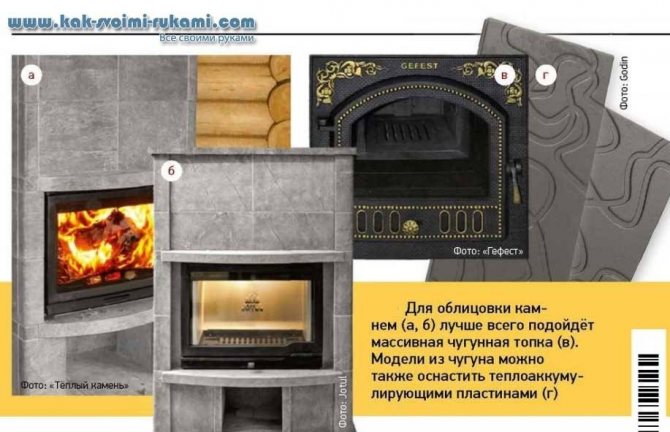

Is the use of fireplaces in the home effective?
Any fireplace is, first of all, a decorative element of the interior, which, thanks to modern developments, is able to effectively participate in heating the premises. So, heating a house with a fireplace with an air duct has a simple structure and an equally simple principle of operation, and therefore it is inexpensive. However, the low efficiency of the circuit sometimes casts doubt on the entire expediency of erecting such a structure.
The principle of operation of a fireplace with a water circuit, as well as the structure of the heating element itself, is more complicated than the previous version, which explains the high cost of both equipment and installation work. However, the efficiency of 70% of fireplaces with a water circuit makes this equipment an excellent alternative source of heat in the house when the main heating element (boiler) is turned off. How to properly install a fireplace with a water circuit will help you understand the video:
P.S. And remember, just by changing your consumption - together we are changing the world! © econet
Using decoupage
A simple and at the same time original way to decorate a battery is to decorate it in the form of decoupage. Its essence is to select the desired pattern, stick it on the surface of the battery prepared in advance and fix it with varnish on top.
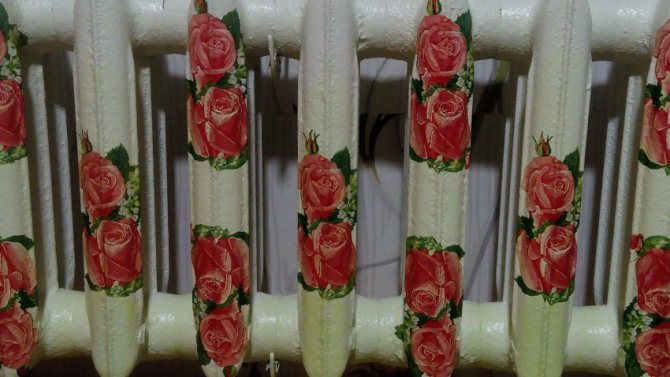

A very simple way to create an unusual battery. It does not require special skills and materials. The main thing is accuracy during execution.
